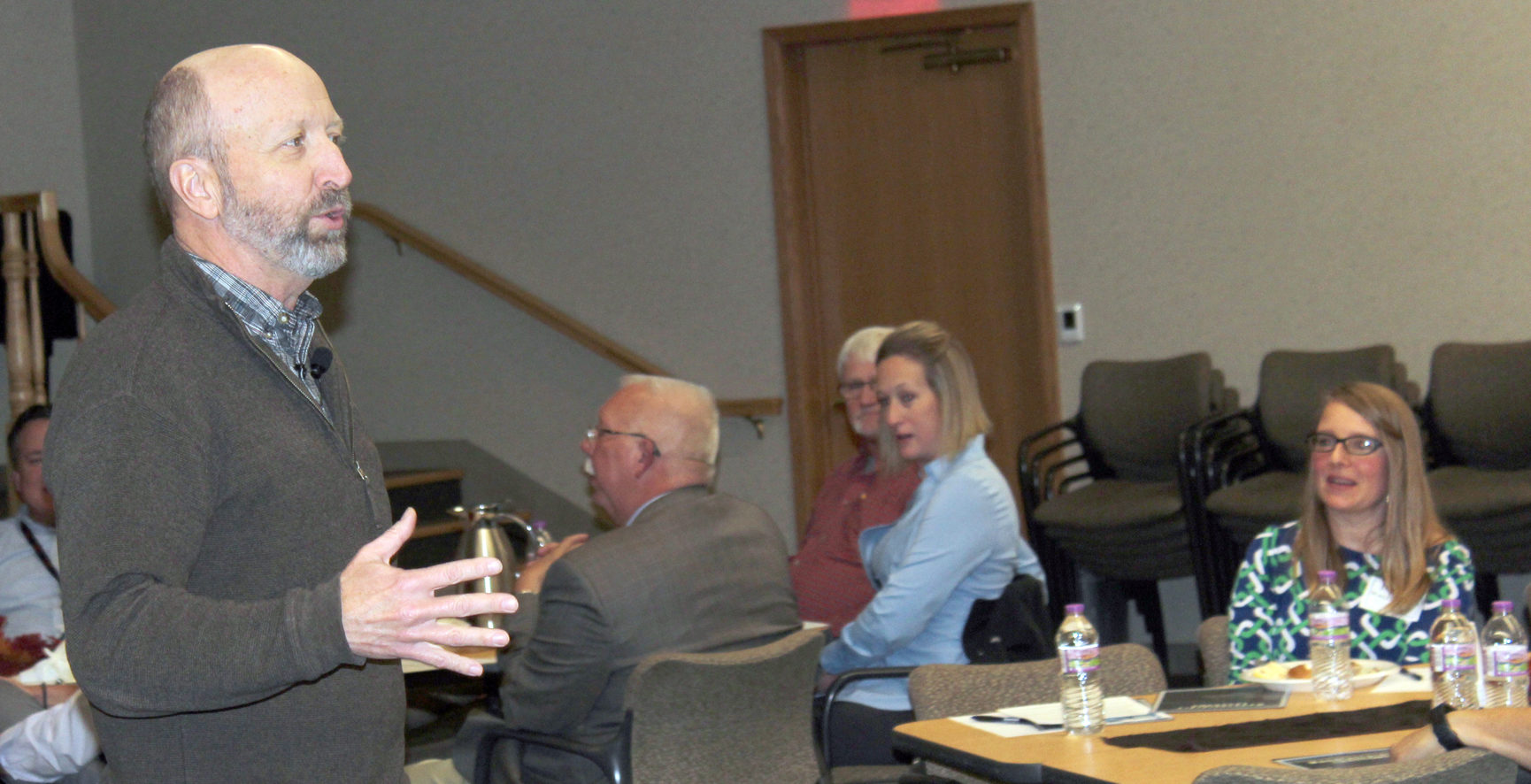
by April Scheinoha
Reporter
Recognition, networking and learning were on the agenda Friday, Nov. 1 during the Manufacturers’ Luncheon at Digi-Key.
Each local manufacturer received a certificate of commendation in recognition of its outstanding contributions to the Minnesota economy. Each certificate was signed by Steve Grove, commissioner of the Minnesota Department of Employment and Economic Development.
Digi-Key was also recognized by Sen. Mark Johnson (R-East Grand Forks). He noted Rep. Dan Fabian (R-Roseau) had introduced a resolution in the Minnesota House of Representatives that honored Digi-Key. It noted that Digi-Key had been recognized by Forbes as one of America’s best employers in 2019. It was also among the top 30 businesses to work for in Minnesota.
This annual event was sponsored by Border State Bank, DEED/CareerForce – Thief River Falls, Northern State Bank, the Northwest Private Industry Council, the Thief River Falls Chamber of Commerce, and Unity Bank.
As in years past, manufacturers also had the opportunity to listen to a presentation at the luncheon. This year, they heard from Tim Denney presenting “Mental Health: Keeping the Workforce Working.” Denney is the principal trainer and consultant at Level 5 Services in Crookston.
Denney spoke about the largest category of mental health difficulties people will encounter – anxiety and depression. “The numbers are actually sobering when we look at them,” he said.
Denney reported that one in five people will experience a diagnosable mental health difficulty in any 12-month period. In any 12-month period, 18% of the general population will be diagnosed with an anxiety disorder. “Depression is the leading cause of disability worldwide by quite a margin,” he said.
And it takes a while for a person to seek treatment for mental illness. Denney noted that, on average, it takes someone 10.1 years from the onset of his or her symptoms to seek treatment. “If this was diabetes, they wouldn’t be here anymore,” he said.
An employee’s depression and/or anxiety may affect his or her work. Anxiety leads to 4.6 lost workdays per month, Denney said. People suffering from anxiety have 1.5 times the risk of being absent at least two weeks.
“It is highly treatable,” said Denney, who noted talk therapy is the gold standard of treatment for anxiety.
Employers may also encounter employees who suffer from depression. “Nearly one in 10 [people] will experience depression in any given 12-month period,” Denney said.
Depression is the most costly mental health difficulty, said Denney, who noted it affects an employee’s time management, decision making, communications and ability to follow safety protocols. A 2003 study – the latest study available – found that depression has led to a loss of $44 billion per year in the United States. He expected that number would now be higher than $50 billion per year.
One way to help employees is for employers and coworkers to change their thinking. People with severe mental illness are no more at risk than the general population of committing crimes. People may think someone with mental illness is lazy, Denney said. In fact, many desperately want to succeed.
Most people can experience recovery and can be more productive in a workplace and thrive, Denney said.
Accommodations can be made for employees experiencing mental health difficulties. Denney noted employers can lower the employee’s anxiety in the person’s work station. He encouraged employers to determine what baseline performance they want the employees to improve. From there, they would create a plan, implement the plan and study it to determine if it works. If it doesn’t work, then they should scrap the plan and come up with a new one.
Recovery will affect productivity at work, said Denney, who encouraged employers to help affected employees access the company’s Employee Assistance Program. Employers can also encourage affected employees to monitor their own emotions and behaviors, and find others to help monitor the affected employees’ emotions and behaviors.
Employers should also lower the stigma and fear of mental illness in the workplace. Denney also encouraged them to implement specific training for some employees to deescalate any mental health crises that may arise. If those employees are unable to deescalate those situations, he encouraged them to utilize the local mobile crisis response team.
